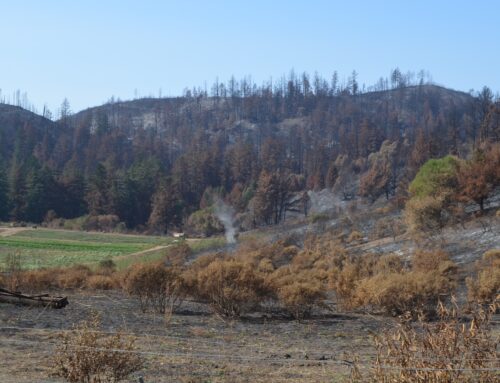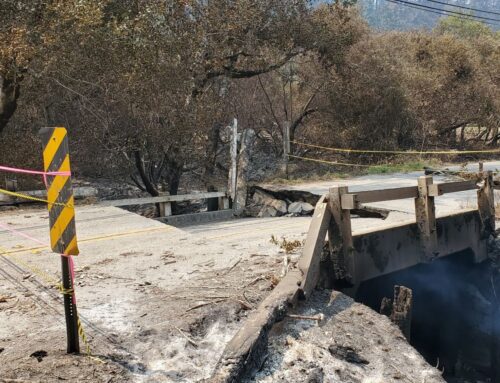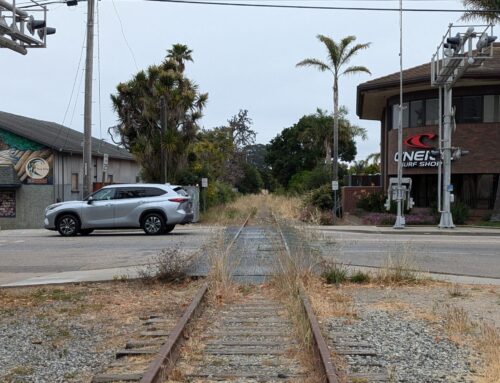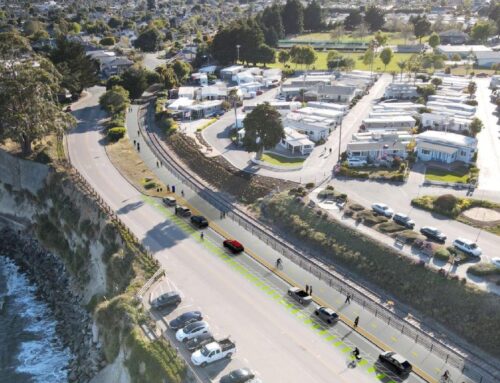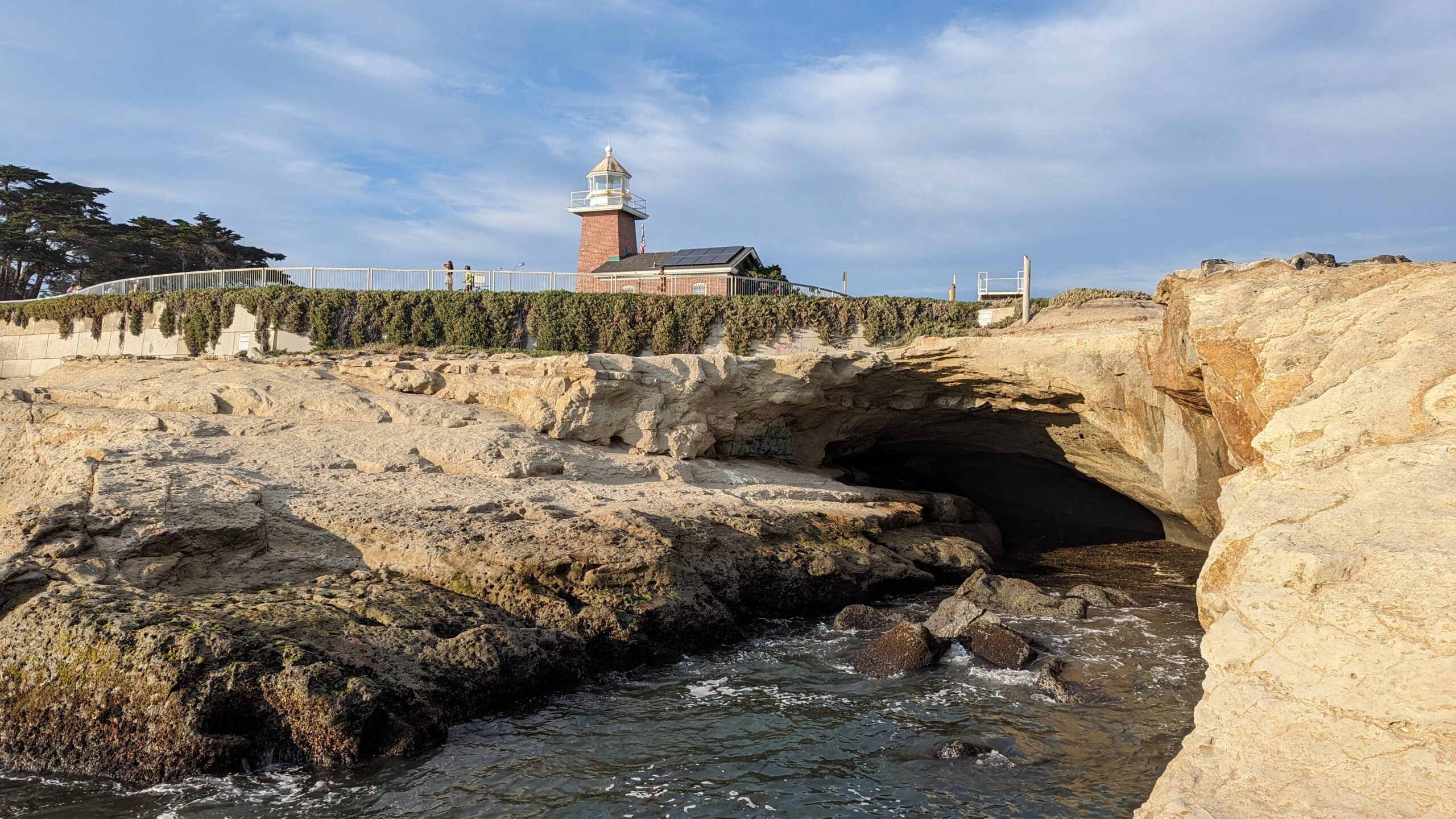
A cave near the lighthouse at Steamer Lane is one of many places where wave action has chipped away at West Cliff. (Stephen Baxter — Santa Cruz Local)
SANTA CRUZ >> For decades, the Monterey Bay coast has been armored with seawalls and large boulders that offer some protection from waves, but the armor often needs replacement and can harm local ecosystems.
Next year, scientists will begin designing “living shorelines” that take a different approach, offering ecological benefits and some erosion protection. Living shorelines come from a different mindset for dealing with coastal erosion, said David Revell, principal of Integral Consulting Inc. The firm is working with State Parks on a grant to restore sand dunes at Seabright, Natural Bridges and Salinas River state beaches.
“Instead of trying to change the processes — stopping erosion or stopping waves from breaking — it’s working with the processes, and allowing the native materials to perform their natural functions,” Revell said.
A UC Santa Cruz scientist said he was skeptical of the effectiveness of these methods, but two state grants aim to continue the work and explore future options.
The California State Coastal Conservancy, a state authority, approved two grants on Sept. 14 that are expected to begin in January 2024.
- The first grant of up to $889,225 will fund the continuation of dune restoration projects at Natural Bridges, Seabright and Salinas River state beaches, as well as designs for living shoreline projects at three more sites on the Monterey Bay coast. The project is a joint effort between California Marine Sanctuary Foundation, State Parks and other partners.
- A second grant of $500,000 will fund the City of Santa Cruz’s efforts to study living shorelines, sand-management and other nature-based solutions to coastal erosion along the city’s coast, essentially from West Cliff Drive to the San Lorenzo River. The grant also will fund designs for three more potential coastline protection projects.
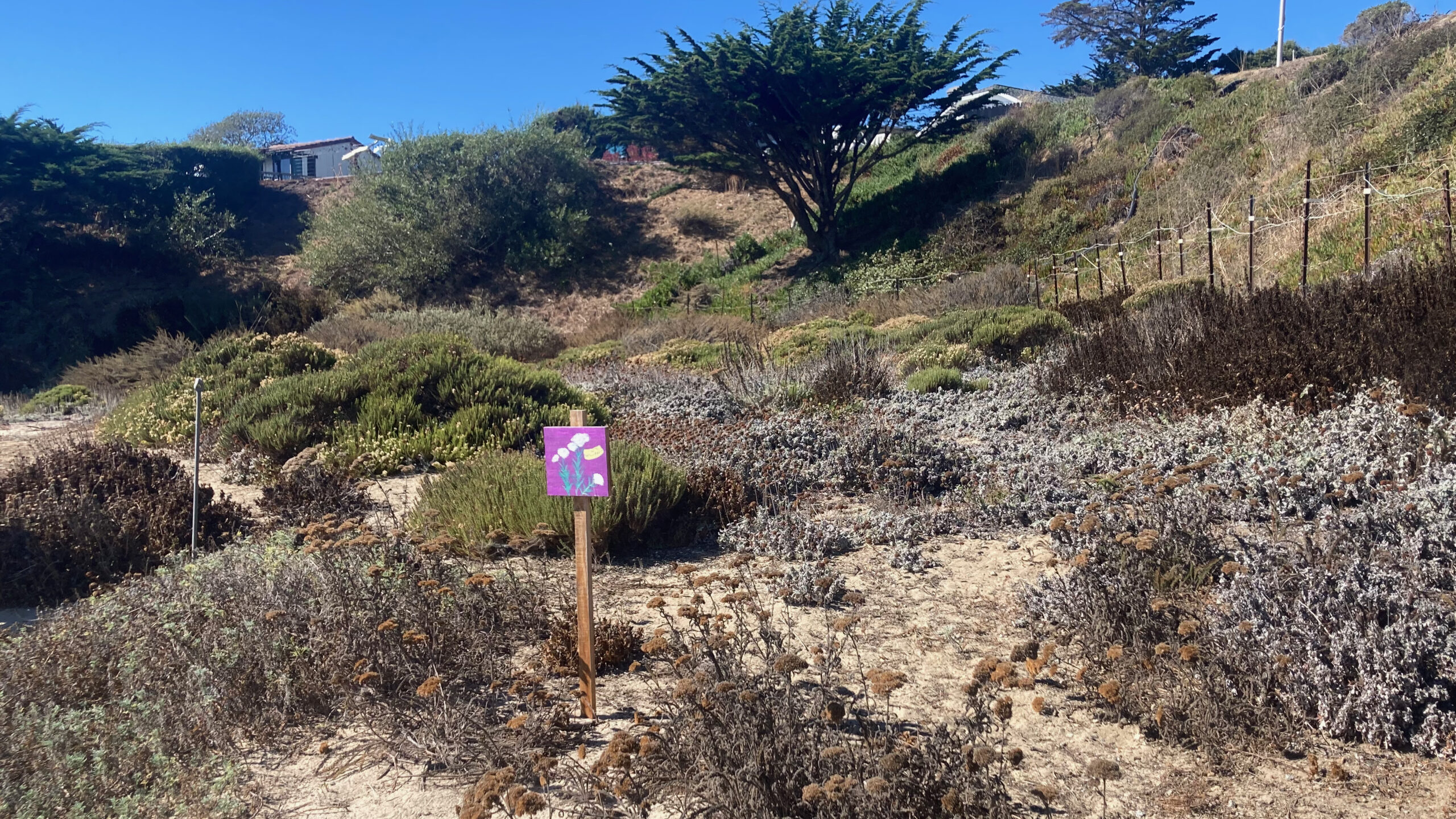
A patch of restored dune habitat stands at Seabright State Beach. A new grant is set to fund more planting efforts. (Jesse Kathan — Santa Cruz Local)
Adapting beaches
For decades, California has depended on seawalls, rocky barriers and similar armoring efforts to protect coastal communities from floods and erosion. But on three state beaches in Santa Cruz County, scientists are restoring dune habitat on sandy beaches to try to create more storm-resilient shores.
At Natural Bridges and Seabright state beaches in Santa Cruz County, and at Salinas River State Beach in Monterey County, ecologists plan to expand planting efforts on 34 acres of dunes and bluffs. Most of the work will take place at Salinas River State Beach, and the team plans to include volunteers to bolster planting efforts.
The money will also fund designs for three more potential living shoreline projects on state beaches.
When heavy storms hit flatter, mostly plant-free beaches, like Santa Cruz and Capitola main beaches, “the waves run as far as they can,” allowing waves to batter the buildings or cliff walls behind them, Revell said. “If you put a dune in there, you reduce the flood extent,” he said. Hilly dunes covered in native plants are more stable and better able to fend off erosion, he said.
Native plants take time to establish, but even projects without living plants may protect shores. In 2022, Integral Consulting designed a dune for Rio Del Mar Beach. A core of driftwood logs was covered in sand, creating a new dune on the formerly flat beach.
When storm surf battered the area during storms in early January, the project may have stemmed some damage.
Similar pilot projects have been trialed elsewhere in Santa Cruz County. The grant will allow scientists to “take a step back” and think strategically about the location and size of future efforts, Revell said.
Part of the challenge isn’t just designing dunes and establishing plants, but finding ways to speed through regulatory hoops that can delay projects for years, Revell said.
Surfers Point in Ventura, for instance, is a model example of a living shoreline in California, Revell said. There, an eroding coastside bike path and parking lot were relocated inland. In their place, ecologists constructed dunes with native plants. The Surfrider Foundation worked for more than a decade to gain approval from city and state regulators.
If projects in Santa Cruz County took as long to get underway, by that time “we could have a foot of sea-level rise,” Revell said. “We need to figure out ways to get these projects implemented in a more streamlined fashion.”
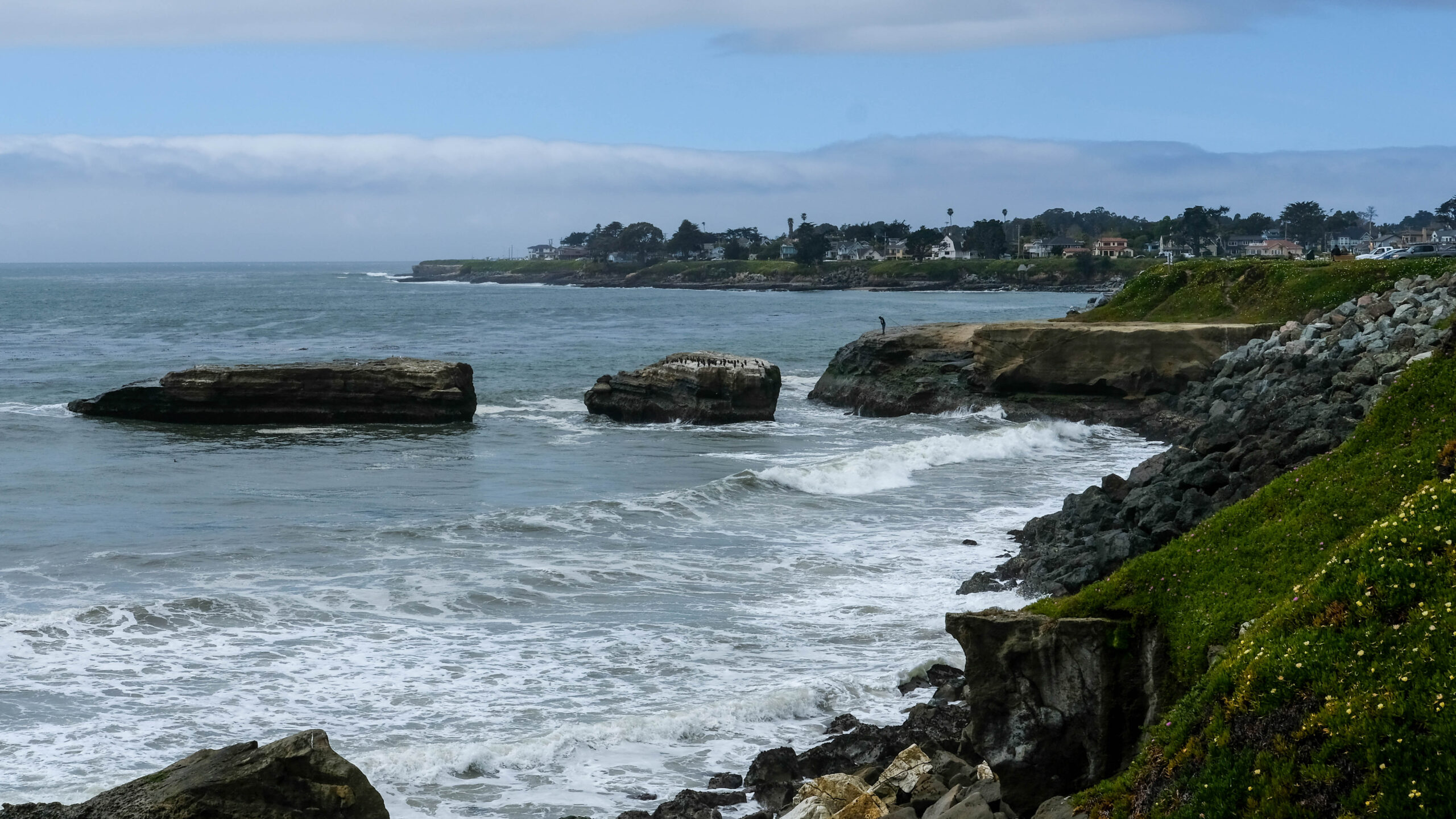
Rip rap, or boulders, have been placed in several spots along West Cliff Drive in Santa Cruz to try to slow cliff erosion. (Nik Altenberg — Santa Cruz Local file)
Nature-based solutions study in Santa Cruz
The City of Santa Cruz could use some of the same dune-restoration techniques as the state beaches, but they would be limited to Santa Cruz Main Beach, Cowell Beach, Mitchell’s Cove and Its Beach near Steamer Lane, said Tiffany Wise-West, sustainability and climate action manager.
Santa Cruz city leaders have already supported the concept of nature-based solutions, including living shorelines, in the city’s West Cliff roadmap. More specific work towards such solutions is set to start in January, when city staff expect to begin work on a feasibility study funded by the California State Coastal Conservancy.
- That study will investigate possible living shorelines projects, sand-management strategies and other nature-based solutions to address coastal erosion. It will also include partial designs for three potential projects.
- The city plans to work with a consultant to determine which projects could be legally and financially achievable.
- City staff plan to develop a virtual reality tool community members could use to visualize potential projects, Wise-West said. In 2021, city leaders released a virtual reality app with models of future sea level rise.
The city’s most pressing erosion issues are along the sandstone bluffs of West Cliff, much of which is already armored with large boulders. On those locations, “there is likely fairly limited application for nature-based solutions,” Wise-West said.
“Living shorelines, one of the things they do need, all of them, is space,” Revell said. “There’s not as many options in the cliffs.”
One possible version of a living shoreline could combine traditional armoring with ecological benefits, Wise-West said. So-called “green-gray” projects could include facades on infill walls along West Cliff outfitted with divots and nooks for seabirds. “They won’t necessarily add an additional risk reduction, but they do enhance ecological function,” Wise-West said.
Another option could be an artificial offshore reef intended to soften swells while promoting surfing conditions, Revell said. His firm has worked on a similar project on the east coast of Australia.
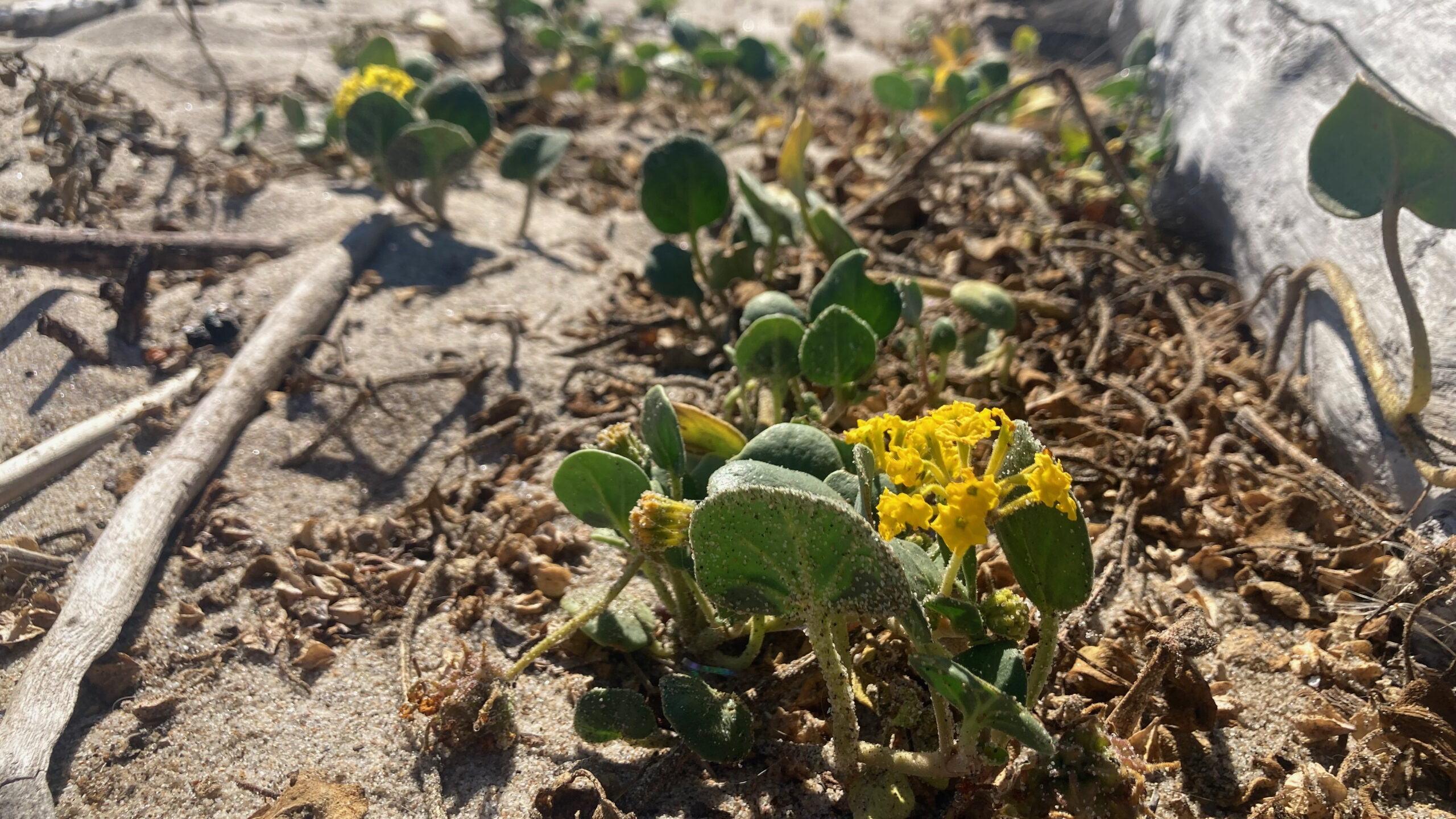
Yellow sand verbena, shown at Seabright State Beach, is one of the plants ecologists are trying to restore on beach dunes to help stem erosion. (Jesse Kathan — Santa Cruz Local)
Shifting sand to beaches
The study will also examine projects that could shift sand floating in the ocean onto the shore, widening existing beaches or even making new ones.
Al Ramadan, a leader of the group Save West Cliff, has championed the idea of filling and extending fingerlike headlands jutting out from the cliffs east of Natural Bridges State Beach. The structure could sweep floating sand shoreward, building a beach along the base of West Cliff.
About 20,000 to 25,000 dump truck loads of sand flow through coastal waters beside Santa Cruz every year, said UC Santa Cruz coastal scientist Gary Griggs. Much of it ultimately falls into the Monterey Bay canyon.
That sand is “a lost resource,” Ramadan said. “We can capture it and use it to our advantage.”
It’s something city projects have done elsewhere on the coast, albeit unintentionally. After the 1964 construction of Santa Cruz Harbor, Seabright Beach lengthened and extended further from the cliffs behind it.
“Before the harbor was built, there was a tremendous amount of erosion on all of those cliffs,” Revell said. “Now the waves rarely, if ever get back to those cliffs.”
It’s too soon to say what kind of strategies the city will ultimately be able to pursue, but “it’s all on the table,” Wise-West said.
Challenges and skepticism
Griggs, the longtime UCSC professor, is largely skeptical that nature-based solutions and living shorelines projects can stand up to increasingly powerful storms fueled by climate change.
“Not that we shouldn’t think about that, but I think we need to be realistic,” Griggs said. “If we get a really big storm with really big waves, all bets are off.”
Some possible solutions, like offshore breakwaters, could be effective in softening waves, he said. But such structures are extremely costly and could face an uphill battle for California Coastal Commission approval, he said.
Griggs also remained unconvinced of the value of outfitting seawalls to create bird habitat. “Is that a living shoreline? I think it’s just a capitalistic venture to make money” for consultants and engineers, he said. Living shorelines projects that have shown the most success include species like coral or mangrove trees, which are not found in California, he said.
Any new measures to protect the coast will have to contend with rising tides and storms fueled by climate change.
Historically, the strongest winter storms have approached Santa Cruz from the northwest, and are deflected and weakened by the coast north of Año Nuevo before entering the bay. But in El Niño years, ocean currents shift south, leading storms more directly toward the Santa Cruz coast. Larger swells and more destructive storms can result, according to a 2015 report prepared in part by the U.S. Army Corps of Engineers.
Climate change is making El Niño years stronger and more common – a trend that is projected to continue.
Even if nature-based solutions can offer some benefits, the protection they provide may pale in comparison to the destructive power of these storms, Griggs said.
He sees the plans for nature-based solutions and living shorelines as a deflection from an unfortunate choice: to spend millions or billions of dollars on an endless effort to preserve the coast, or to slowly move homes and roads away from some of the most iconic land in Santa Cruz.
“In the long run, depending on where you put your timeline, there is absolutely nothing we can do to hold back the Pacific Ocean,” Griggs said.
Get involved
Sign up to volunteer with State Parks and at beaches in Santa Cruz County.
Read more
- Amid West Cliff repairs, more diverse group wanted for coastal vision in Santa Cruz — Sept. 27, 2023
- Input wanted on 50-year vision for West Cliff Drive in Santa Cruz — Aug. 18, 2023
- Future of West Cliff Drive explored by residents, city staff — April 28, 2023
- One-way West Cliff Drive pilot advances in Santa Cruz — Feb. 28, 2023
- Coastal Commission staff outlines hopes for West Cliff plan — Feb. 10, 2023
- Santa Cruz aims for new approaches to West Cliff Drive erosion — Dec. 3, 2020
Questions or comments? Email [email protected]. Santa Cruz Local is supported by members, major donors, sponsors and grants for the general support of our newsroom. Our news judgments are made independently and not on the basis of donor support. Learn more about Santa Cruz Local and how we are funded.
Jesse Kathan is a staff reporter for Santa Cruz Local through the California Local News Fellowship. They hold a master's degree in science communications from UC Santa Cruz.


